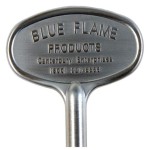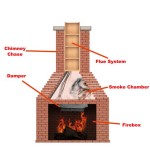Achieving a Spotless Fireplace: A Guide to Cleaning Fireplace Brick
The fireplace, often a focal point of the home, provides warmth and ambiance, especially during colder months. However, the constant burning of wood leads to the accumulation of soot, creosote, and ash on the surrounding brick, diminishing its aesthetic appeal. Maintaining clean fireplace brick not only enhances the visual aspect of the fireplace but also contributes to a safer and healthier indoor environment. This article provides a comprehensive guide to effectively cleaning fireplace brick, outlining different methods and necessary precautions.
Understanding the Challenges of Cleaning Fireplace Brick
Fireplace brick presents unique cleaning challenges due to its porous nature. The pores in the brick absorb soot and creosote, making it difficult to remove surface stains completely. Furthermore, the accumulation of these substances can alter the brick's color and texture over time. Different types of brick and mortar may also react differently to various cleaning solutions, necessitating careful consideration when selecting a cleaning method. Ignoring the buildup of soot and creosote can also pose a fire hazard. Creosote is a highly flammable byproduct of burning wood, and its accumulation in the chimney and on the fireplace brick can significantly increase the risk of a chimney fire. Therefore, regular cleaning is crucial for safety as well as aesthetics.
The composition of the staining substances also varies. Soot consists primarily of carbon, while creosote is a complex mixture of tar, resins, and other organic compounds. This complexity requires different approaches for effective removal. Mild cleaning agents that work well on soot may prove ineffective against stubborn creosote stains. Understanding the nature of the staining is the first step in selecting the most appropriate cleaning method and materials.
Methods for Cleaning Fireplace Brick
Several methods can be employed to clean fireplace brick, ranging from simple household solutions to more specialized cleaning products. The choice of method depends on the severity of the staining, the type of brick, and personal preferences. It is always advisable to test any cleaning solution on a small, inconspicuous area of the brick before applying it to the entire surface to ensure it does not cause any damage or discoloration.
One common method involves using a solution of trisodium phosphate (TSP). TSP is a powerful cleaning agent that is effective at removing grease, soot, and other stubborn stains. To use TSP, mix it with warm water according to the manufacturer's instructions. Apply the solution to the brick using a scrub brush, working in a circular motion to loosen the dirt and grime. Allow the solution to sit on the brick for a few minutes before rinsing it thoroughly with clean water. It is crucial to wear gloves and eye protection when working with TSP, as it can be irritating to the skin and eyes.
Another effective method involves using a mixture of baking soda and water. Baking soda is a mild abrasive that can help to scrub away surface stains without damaging the brick. To use baking soda, create a paste by mixing it with water. Apply the paste to the brick and let it sit for several hours, or even overnight, to allow it to penetrate the stains. Then, scrub the brick with a brush and rinse it with clean water. This method is particularly effective for removing light soot and ash stains.
For more stubborn stains, a commercial fireplace brick cleaner may be necessary. These cleaners are specifically formulated to remove soot, creosote, and other tough stains from brick. When using a commercial cleaner, always follow the manufacturer's instructions carefully. Apply the cleaner to the brick using a brush or sponge and let it sit for the recommended amount of time. Then, scrub the brick and rinse it thoroughly with clean water.
In some cases, a pressure washer may be used to clean fireplace brick, but this method should be approached with caution. The high pressure of the water can damage the brick and mortar, especially if they are old or weak. If using a pressure washer, start with a low pressure setting and gradually increase it until the stains begin to lift. Avoid spraying the water directly at the mortar joints, as this can erode them over time. It is also important to ensure that the area is well-ventilated, as pressure washing can create a significant amount of water spray and debris.
Essential Precautions and Safety Measures
Safety is paramount when cleaning fireplace brick. The use of harsh chemicals like TSP requires adequate ventilation and personal protective equipment. Always wear gloves, eye protection, and a mask to avoid inhaling fumes or getting chemicals on the skin. When working with ladders or scaffolding, ensure they are stable and properly secured to prevent falls. Avoid mixing different cleaning agents, as this can create dangerous chemical reactions. For example, mixing bleach with ammonia can produce toxic fumes that can be harmful or even fatal.
Protecting surrounding surfaces is also crucial. Cover the floor and furniture near the fireplace with drop cloths or plastic sheeting to prevent them from getting stained or damaged by cleaning solutions. Seal off any ventilation ducts or openings to prevent dust and debris from spreading throughout the house. After cleaning, properly dispose of any used cleaning materials, such as rags, sponges, and brushes, according to local regulations.
Proper ventilation is essential, especially when using chemical cleaners. Open windows and doors to allow fresh air to circulate and prevent the buildup of fumes. Consider using a fan to help circulate the air, especially in enclosed spaces. If you experience any dizziness, nausea, or other symptoms while cleaning, stop immediately and seek fresh air. If symptoms persist, consult a medical professional.
The frequency of cleaning depends on the frequency of fireplace use. For fireplaces used regularly, cleaning the brick at least once a year is recommended. For fireplaces used less frequently, cleaning every two to three years may be sufficient. Regular maintenance, such as sweeping up ash and debris after each use, can also help to prevent the buildup of stains and make cleaning easier in the long run.

How To Clean Fireplace Bricks Simple Practical Beautiful

How To Clean Fireplace Bricks Simple Practical Beautiful

How To Clean Brick Fireplace Royal Stone Care

How To Clean A Brick Fireplace In 6 Steps Brickanew

How To Clean A Fireplace Diy Basics

How To Clean Fireplace Bricks Cleanup Team

How To Clean Brick Fireplaces Mantels Hearths And More My Space

Mortar Wash Brick Fireplace Makeover Dimples And Tangles

How To Clean Brick The Home Depot

How To Clean Fireplace Bricks 9 Steps With S Wikihow
Related Posts








